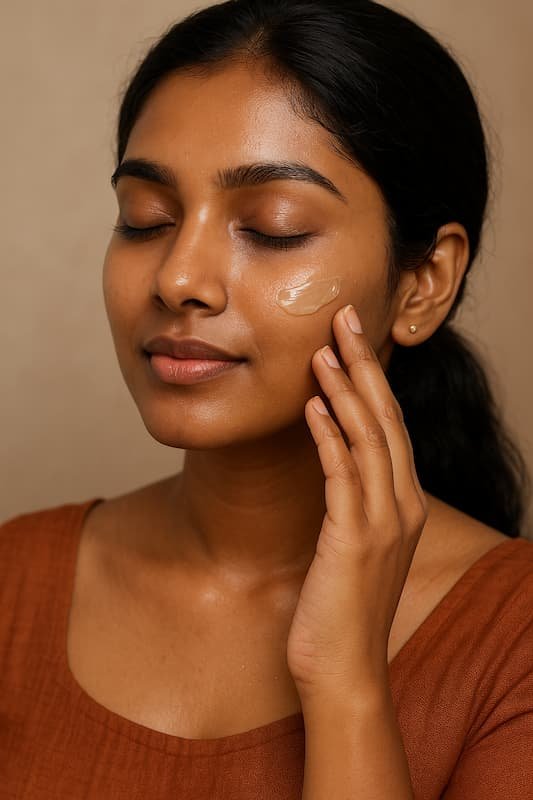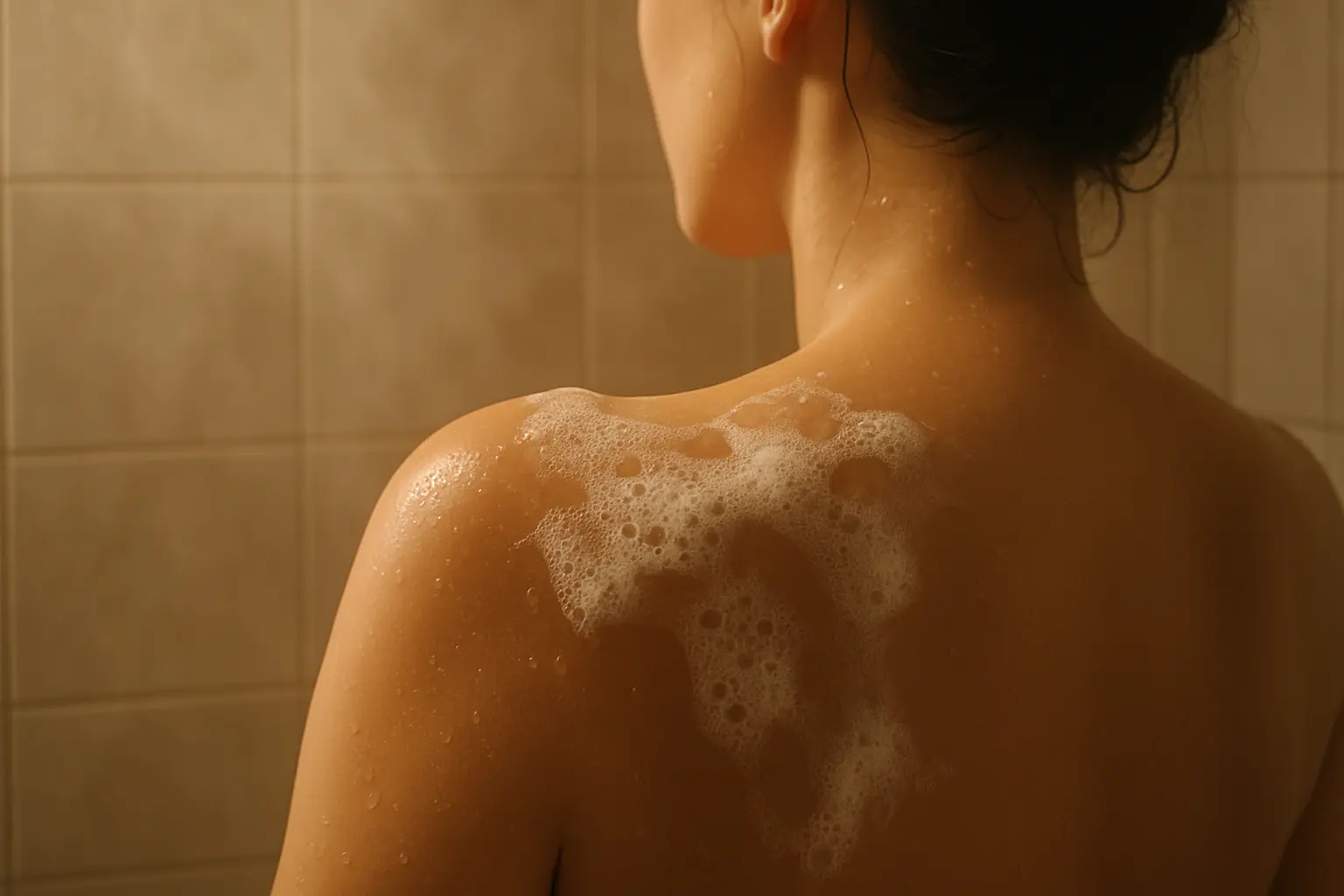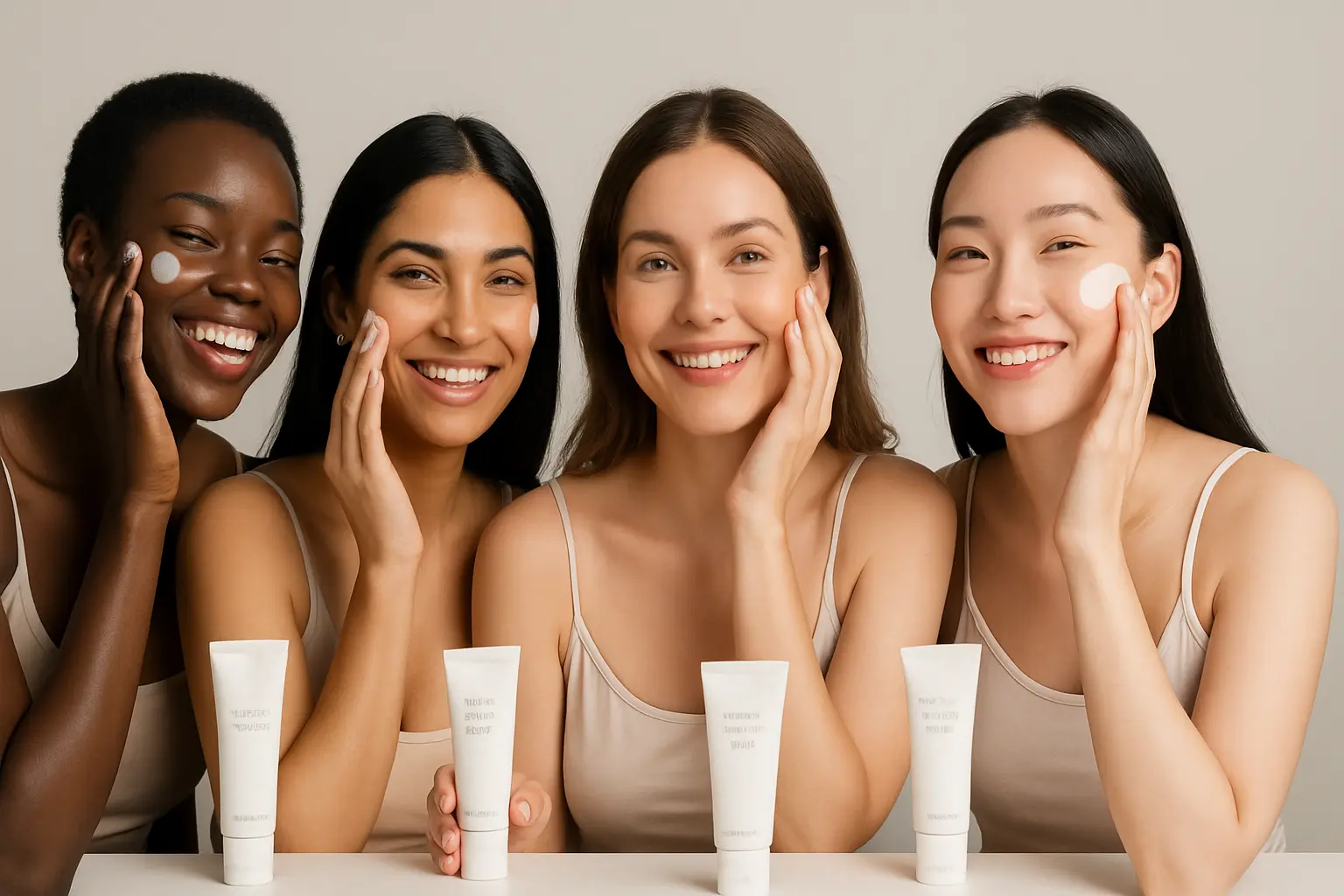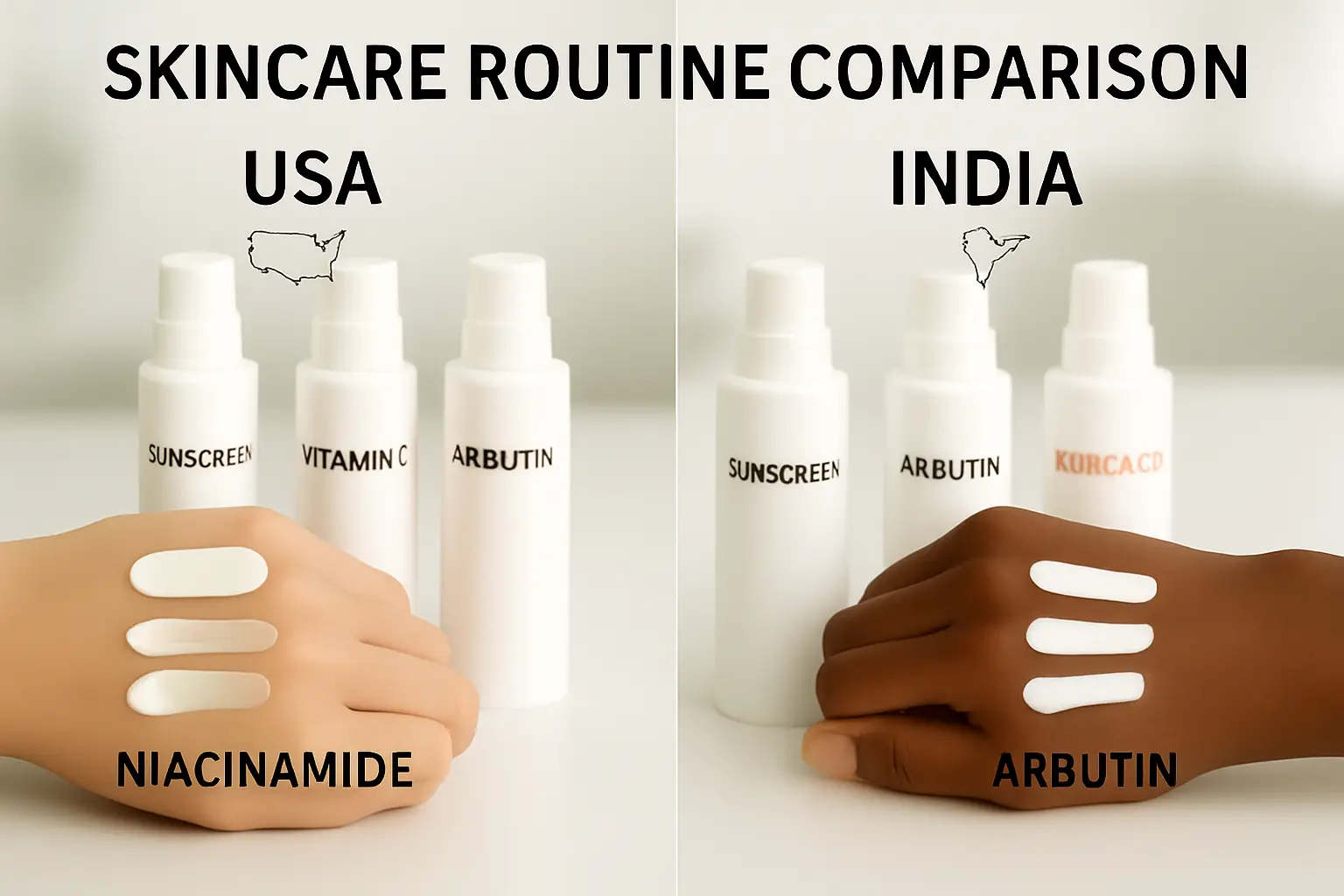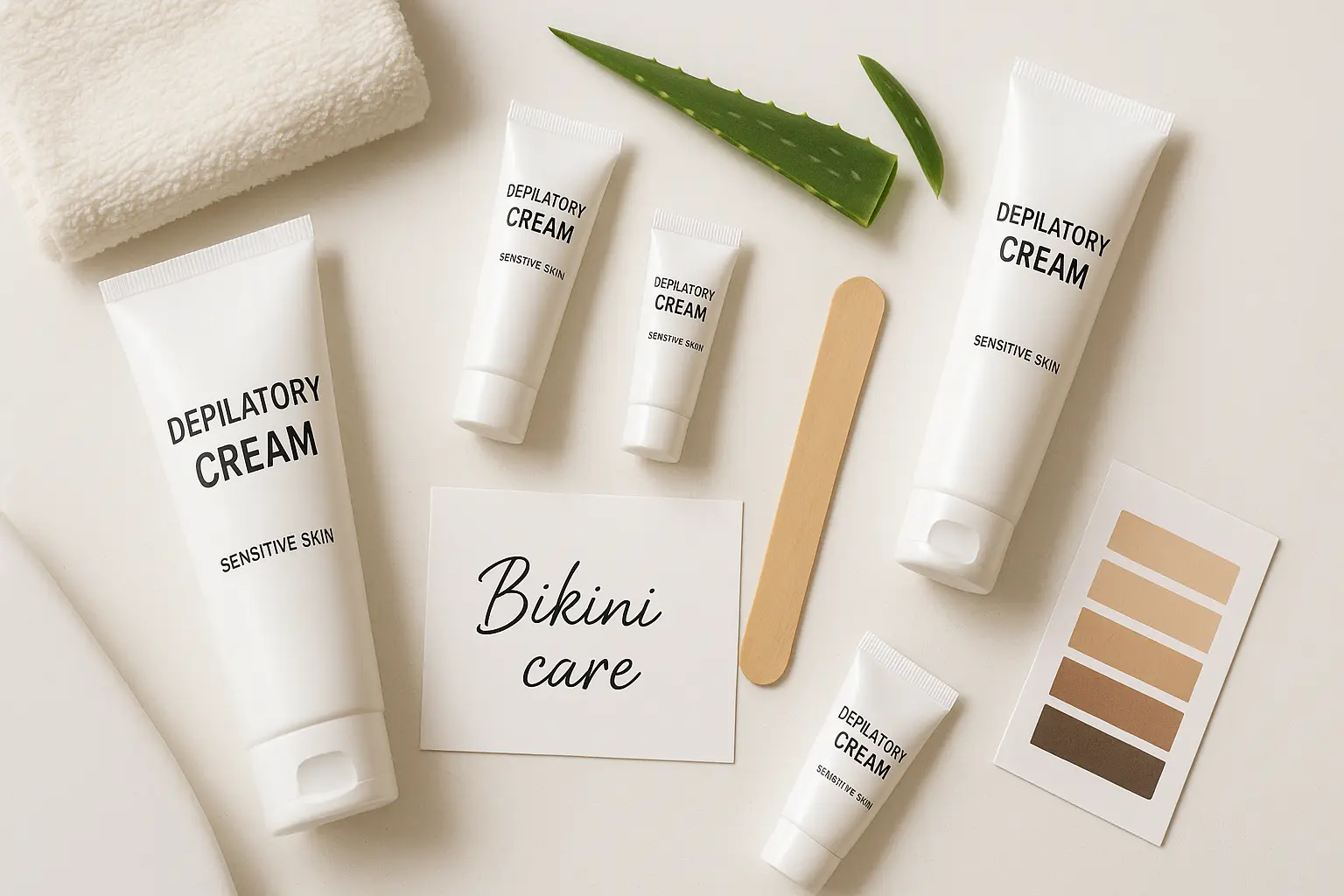Pure Aloe Vera Gel for Face: Ultimate Glow, Naturally
Introduction: Why Hydration Matters for Facial Skin
There’s a familiar moment across India—stepping outdoors into dry heat, sticky humidity, or dusty air and feeling the skin pull tight or turn dull. Hydration is the quiet comfort the skin keeps asking for. That’s where Pure Aloe Vera Gel for Face stands out—lightweight, soothing, and refreshing without a greasy finish. Aloe Vera offers water-rich moisture that calms, softens, and supports a healthy-looking barrier, making it easy to use daily in any climate.
This guide explains the hydrating science behind aloe, how to pair it with Vitamin E for extra nourishment, and what to look for when choosing Organic Aloe Vera Gel for Face. It also provides practical AM/PM routines and a clear decision framework to answer Which Aloe Vera Gel is Best for Face based on skin type and goals. From everyday comfort to a fresh, natural glow, aloe gel can be a budget-friendly upgrade that fits any routine—and any lifestyle. Readers will find step-by-step tips, buyer insights for Indian markets, and clear advice for sensitive or acne-prone skin, all designed to deliver real results without complexity.
Key Takeaways
- Pure Aloe Vera Gel for Face gives fresh, lightweight hydration suited to India’s diverse climates.
- Pair aloe with Vitamin E for a soft, nourished glow—especially helpful for dry or dull skin.
- Choose Organic Aloe Vera Gel for Face with short ingredient lists and minimal additives.
- Patch test first; start with thin layers for sensitive or acne-prone skin.
- Use aloe under sunscreen in the morning and under moisturizer at night for best results.
What Makes Pure Aloe Vera Gel for Face So Effective?

Hydration mechanics that feel weightless
Aloe gel is mostly water, but the magic lies in its moisture-binding polysaccharides (mucopolysaccharides) that help the skin hold water longer while forming a thin, breathable film on the surface. This film reduces transepidermal water loss without a heavy or sticky feel—perfect for hot summers, monsoons, or air-conditioned workplaces. The result is skin that feels soft and looks refreshed, with a comfortable, non-greasy finish that layers well with daily SPF and makeup.
Comfort for stressed, sun-exposed skin
Aloe contains soothing plant compounds that visibly calm irritation from heat, pollution, or routine exfoliation. This makes it a gentle pick for post-sun comfort, especially in regions with intense UV exposure. While it’s not a substitute for sunscreen or after-sun medical care, it can support the look and feel of skin recovery as part of a balanced routine.
Texture and elasticity support
Research suggests that aloe may encourage a healthier-feeling skin surface by supporting fibroblast activity, which is associated with improved elasticity and a smoother feel over time. The expectation should be realistic: aloe won’t erase lines, but with consistent use, many notice a supple, more comfortable texture.
Friendly for multiple skin types
Pure Aloe Vera Gel for Face is easy to adapt. Oily and combination skin types tend to appreciate its fast absorption and non-greasy finish. Normal to dry skin types can enjoy the immediate hydration, then lock it in with a moisturizer. Sensitive or reactive skin may also benefit from aloe’s calming nature—just patch test and keep layers light when starting out.
How aloe fits with other actives
Because aloe is water-light, it’s an ideal base layer under serums, Vitamin E, or a simple moisturizer. It doesn’t conflict with most routines and can help improve spreadability and comfort. For daytime, apply aloe first, then sunscreen. For nighttime, aloe can be the hydration step under a moisturizer, with optional Vitamin E a few evenings per week for extra nourishment.
Key Benefits of Pure Aloe Vera Gel for Face
Lightweight moisture across climates
Aloe Vera offers quick, refreshing hydration that doesn’t feel heavy—ideal for humid coastal cities and hot interiors alike. It absorbs fast and leaves a breathable finish, making it easy to use before sunscreen or makeup without pilling.
Soothing comfort after sun and pollution
Frequent sun exposure and urban pollution can leave skin feeling irritated or looking flushed. A thin layer of aloe provides a cooling feel and visible comfort. It’s a smart post-commute or post-sun step to support a calmer appearance while the barrier regains balance.
Smoother-feeling texture and bounce
With regular use, many notice skin that feels softer and more supple. While aloe isn’t a resurfacing acid or retinoid, its hydration support can make texture look more even and fine dryness lines less noticeable.
Friendly for multiple skin types and concerns
- Oily/combination: Aloe can be the only hydrator in sticky weather.
- Normal: A reliable water layer under SPF and a light day cream.
- Dry: Use aloe first, then follow with a cream to lock moisture in.
- Sensitive: Start with thin layers and patch test; avoid strong actives on the same day initially.
- Acne-prone: Aloe’s light texture and soothing feel are helpful; pair with non-comedogenic products.
Budget-friendly, daily-care staple
Because a small amount spreads well, aloe tends to be cost-effective for daily use. It can replace heavier gels in summer or layer under richer creams in winter, offering flexibility across seasons.
Quick view of aloe’s key benefits and best pairings
| Benefit | What it does | Best pairing |
|---|---|---|
| Hydration | Water-light moisture; reduces TEWL | Moisturizer or Vitamin E at night |
| Soothing | Calms visible redness/irritation | Sunscreen in the AM; gentle cleanser |
| Texture feel | Softer, more supple look | Niacinamide serum (alternate days) |
| Climate fit | Works in heat and humidity | Lightweight SPF; non-greasy makeup |
Practical tip: For those who struggle with pilling under sunscreen, apply a thin layer of aloe, wait 60–90 seconds, then use a lightweight, gel-based SPF. Keep quantities modest for a smooth finish.
Aloe Vera Gel and Vitamin E for Face: The Hydration + Antioxidant Duo
Why pair aloe with Vitamin E?
Aloe provides immediate hydration and a soothing feel, while Vitamin E adds a comforting, nourishing finish with antioxidant support. Together, they help skin look dewier, especially when dryness or dullness is a concern. This duo can be particularly helpful during North Indian winters, in air-conditioned offices, or after long days in the sun (used at night).
Smart layering for different skin types
- Oily/combination: Apply a thin aloe layer, then a light gel-cream containing Vitamin E or a very small amount of Vitamin E moisturizer. Keep textures light to avoid congestion.
- Normal: Aloe first, followed by a balanced, non-greasy Vitamin E cream.
- Dry/dehydrated: Aloe → moisturizer → a couple of drops of Vitamin E blend pressed in to seal.
- Sensitive: Patch test both products; start on alternate nights before increasing frequency.
Frequency and timing that work
For most skin types, using Aloe Vera Gel and Vitamin E for Face 3–4 evenings per week strikes a good balance. On other nights, aloe plus a simple moisturizer keeps the routine breathable. In the morning, keep the pairing light and always follow with sunscreen.
Tips to avoid heaviness or pilling
- Use pea-sized amounts and allow each layer 60–90 seconds to settle.
- Prefer gel-cream textures in humid climates.
- If makeup pills, reduce Vitamin E amount or switch it to nighttime only.
When to scale back
If skin shows signs of congestion or a filmy feel, reduce Vitamin E frequency or switch to lighter formats. Sensitive users should keep formulas simple at first—aloe alone can be deeply comforting—and add Vitamin E once the skin is calm.
How to Use Pure Aloe Vera Gel for Face (AM/PM Routines)
AM routine: fresh, breathable hydration
- Cleanse with a gentle face wash suited to the skin type.
- Apply a thin layer of Pure Aloe Vera Gel for Face and let it absorb fully.
- Follow with a lightweight moisturizer if needed; oily skin may skip this in humid weather.
- Finish with a broad-spectrum sunscreen (SPF 30+) and allow it to set before makeup.
Tips: Keep quantities modest and wait between steps to prevent pilling. For office days, pair aloe with a hydrating yet non-greasy sunscreen for lasting comfort in AC.
PM routine: restore and lock in hydration
- Cleanse to remove sweat, pollution, and sunscreen.
- Apply aloe gel as the hydrating base.
- For dry or mature skin, add a moisturizer; for extra nourishment, finish with a small amount of Vitamin E blend 2–4 nights a week.
- If using actives (like niacinamide), apply them after aloe and before moisturizer, on alternate nights to avoid overload.
Sensitive or acne-prone skin tips
- Patch test behind the ear or along the jawline for two nights in a row.
- Start aloe daily at night; move to AM+PM once the skin feels comfortable.
- Introduce Vitamin E on alternate nights to gauge tolerance.
- Avoid harsh scrubs or strong acids on the same night as Vitamin E while starting out.
Routine variations for Indian climates
- Humid regions: Aloe + sunscreen in the morning may be enough.
- Dry/cool seasons: Aloe + moisturizer both AM and PM; Vitamin E a few nights weekly.
- Travel days: Keep it simple—cleanse, aloe, SPF; at night, aloe + moisturizer.
Organic Aloe Vera Gel for Face: What to Look For (Buyer’s Guide)
Ingredient list: short, clear, and aloe-forward
Seek a high percentage of Aloe Barbadensis Leaf Juice near the top of the INCI list. For Organic Aloe Vera Gel for Face, look for recognized organic certifications and minimal, skin-friendly preservatives. Avoid neon colors and heavy fragrance—pure gels are typically clear to slightly cloudy.
Packaging and storage: protect the goodness
Opaque or UV-protected containers help guard sensitive components from light and heat. Pumps or flip caps are more hygienic and reduce contamination. In India’s warmer regions, store gels away from direct sunlight and consider refrigeration for a cooling application experience.
Add-ons: when “less” or “a little more” makes sense
- Sensitive/acne-prone: Start with minimalist gels (no color, low fragrance).
- Dry/mature: Formulas with small amounts of Vitamin E or humectants (like glycerin) can feel more cushioned.
- All types: Keep add-ons simple while trialing; complex blends make it harder to spot triggers.
Buying in India: practical checks
- Purchase from reputable marketplaces or brand websites.
- Check batch number, manufacturing date (MFG), and best before.
- Read recent reviews for texture and fragrance notes.
- Consider Indian brands emphasizing transparency and short ingredient lists.
Quick buyer’s table: purity and packaging cues
| Factor | What to look for | Why it matters |
|---|---|---|
| INCI order | Aloe near the top; few additives | Indicates higher aloe content and clarity |
| Color/scent | Clear to slight tint; low or no added fragrance | Lowers irritant risk; looks natural |
| Packaging | Opaque/UV-protected; hygienic pump/flip-top | Preserves quality; reduces contamination |
| Dates | Clear MFG and expiry on label | Ensures freshness and safe use window |
Best Aloe Vera Gel for Face in India

Finding the Best Aloe Vera Gel for Face in India comes down to three simple checks: purity, skin-type match, and trustworthy packaging. Look for “Aloe Barbadensis Leaf Juice” near the top of the ingredient list, a short INCI with minimal additives, and a clear or slightly cloudy gel (not neon green). Fragrance-free or low-fragrance options are friendlier for sensitive or acne-prone skin, while dry or mature skin may prefer gels that include a touch of Vitamin E or glycerin for extra cushion. This ensures the Best Aloe Vera Gel for Face delivers water-light moisture without a sticky or greasy feel.
For everyday use in Indian climates, pick a fast-absorbing texture that layers well under sunscreen in the morning and under a light moisturizer at night. Opaque or UV-protected tubes and pumps help keep the formula stable in heat and humidity, and visible batch/expiry details signal quality control. Start with thin layers, patch test on the jawline, and adjust frequency based on comfort.
Those seeking a dewy, nourished finish can pair aloe with a gentle Vitamin E cream a few evenings per week, while oily or combination skin might prefer aloe alone in humid weather. Travelers and office-goers in AC can keep routines simple: cleanse, aloe, SPF by day; cleanse, aloe, moisturizer by night. By focusing on purity, texture, and reliable packaging, it becomes easier to choose the Best Aloe Vera Gel for Face that fits both skin needs and India’s diverse conditions.
Which Aloe Vera Gel is Best for Face? Decision Framework
Filter 1: Purity and transparency
Look for aloe high on the ingredient list and minimal additives, with simple, recognizable components. Avoid intense colors or heavy fragrance. Transparent ingredient disclosures and clear sourcing build trust.
Filter 2: Match the skin type
- Oily/combination: Choose fast-absorbing, non-tacky gels that dry to a clean finish.
- Normal: Balanced gels that sit well under SPF and makeup.
- Dry/mature: Consider aloe plus a compatible moisturizer or a gel that includes gentle emollients or Vitamin E.
- Sensitive/acne-prone: Start with a fragrance-free, minimalist formula; patch test before daily use.
Filter 3: Packaging and brand reliability
Opaque or UV-protected packaging, hygienic dispensers, and clear batch/expiry information indicate care in formulation and quality. Favor brands with responsive customer support and practical storage advice for Indian conditions.
Putting it together: try, then tune
If aloe is new in the routine, start with a simple, pure gel for two weeks. Observe how the skin feels across different times of day and climates. If more nourishment is needed, add a moisturizer or incorporate Vitamin E on alternate nights. If shine or congestion appears, reduce layers, choose lighter textures, or limit Vitamin E to nighttime.
Simple decision table (Which Aloe Vera Gel is Best for Face?)
| Need | Choose this | Adjust with |
|---|---|---|
| Pure hydration | Minimalist aloe gel | Add moisturizer in winter |
| Dewy nourishment | Aloe + Vitamin E cream | Use Vitamin E 2–4 nights/week |
| Sensitive comfort | Fragrance-free simple gel | Introduce Vitamin E later |
| Makeup-friendly base | Fast-absorbing, non-tacky gel | Wait 60–90s between layers |
Safety, Side Effects, and Who Should Avoid It
Start with a patch test
Even gentle products can cause sensitivity for some. Apply a small amount along the jawline or behind the ear for two consecutive nights. If redness, itching, or bumps appear, pause and reassess the formula.
Use on intact skin and keep routines balanced
Avoid applying to broken or infected skin unless advised by a professional. Keep the rest of the routine simple when first adding aloe or Vitamin E—this makes it easier to identify what suits the skin. If using strong actives, alternate nights to prevent overload.
When to consult a dermatologist
Those with chronic or complex concerns—like active eczema, severe acne, or rosacea—should seek guidance before changing routines. Aloe can support hydration and comfort but isn’t a medical treatment.
Practical storage for Indian climates
Store away from direct sunlight and heat sources. In hot weather, refrigeration can improve application comfort and help preserve the feel of the gel.
Frequently Asked Questions about Pure Aloe Vera Gel for Face
What are the benefits of aloe vera for skin?
Aloe vera offers numerous benefits for skin health. It is rich in vitamins and has healing properties that can help soothe irritated skin, hydrate dry skin, and promote skin regeneration. The gel can also assist in healing minor burns and sunburns, making it an excellent natural remedy for various skin conditions.
How do I apply aloe vera gel on my face?
To apply aloe vera gel on your face, start by cleansing your skin. Take a small amount of the gel, about 1 tablespoon of aloe vera, and gently massage it onto your face in circular motions. Allow it to absorb into the skin without rinsing for maximum hydration and benefits.
Can I use aloe vera gel for oily skin?
Yes, aloe vera gel can be beneficial for oily skin as it is lightweight and does not clog pores. It helps to balance the skin’s moisture levels and can soothe inflammation associated with acne, promoting a clearer complexion.
Is fresh aloe vera gel better than store-bought options?
Fresh aloe vera gel is often considered more effective than store-bought options as it contains higher concentrations of nutrients and healing properties. You can obtain fresh aloe vera gel by cutting a leaf from the aloe vera plant and extracting the gel directly, ensuring you get the maximum benefits.
Can aloe vera gel help with sunburn?
Aloe vera gel may help treat sunburn due to its soothing and cooling properties. Applying aloe vera gel on sunburned skin can provide relief from pain and redness, promoting healing and hydration.
Is it safe to use aloe vera gel on sensitive skin?
Yes, aloe vera gel is generally safe for sensitive skin. However, it’s best to conduct a patch test before using it on larger areas. This can help ensure that your skin does not react negatively to the gel.
How often should I apply aloe vera gel for the best results?
For optimal results, you can apply aloe vera gel once or twice daily. Regular use can help maintain skin hydration, improve skin texture, and support healing processes, leading to radiant skin over time.
What are the effects of aloe vera on acne?
Aloe vera may help treat acne by reducing inflammation, soothing irritated skin, and providing hydration without clogging pores. Its antibacterial properties can also help prevent future breakouts, making it a beneficial addition to an acne treatment routine.
Can I use aloe vera gel overnight?
Yes, applying aloe vera gel overnight can enhance its hydrating and healing effects. Simply apply a small amount to your face before bed, and wake up with refreshed and glowing skin.
Conclusion: The Case for Pure Aloe Vera Gel for Face
Pure Aloe Vera Gel for Face is a practical, budget-friendly way to keep skin hydrated, soft, and comfortable across India’s varied climates. As a water-light base layer, it calms and refreshes while working well under sunscreen in the morning and with moisturizers or Vitamin E at night. The best results come from smart selection—simple ingredient lists, protective packaging, and steady use.
For those who value plant-forward care, aloe also aligns with a broader wellness approach and encourages exploration of Ayurvedic hair care solutions at home. With the right product and routine, skin can look fresh, feel calmer, and maintain hydration day after day—without complicating the bathroom shelf.

